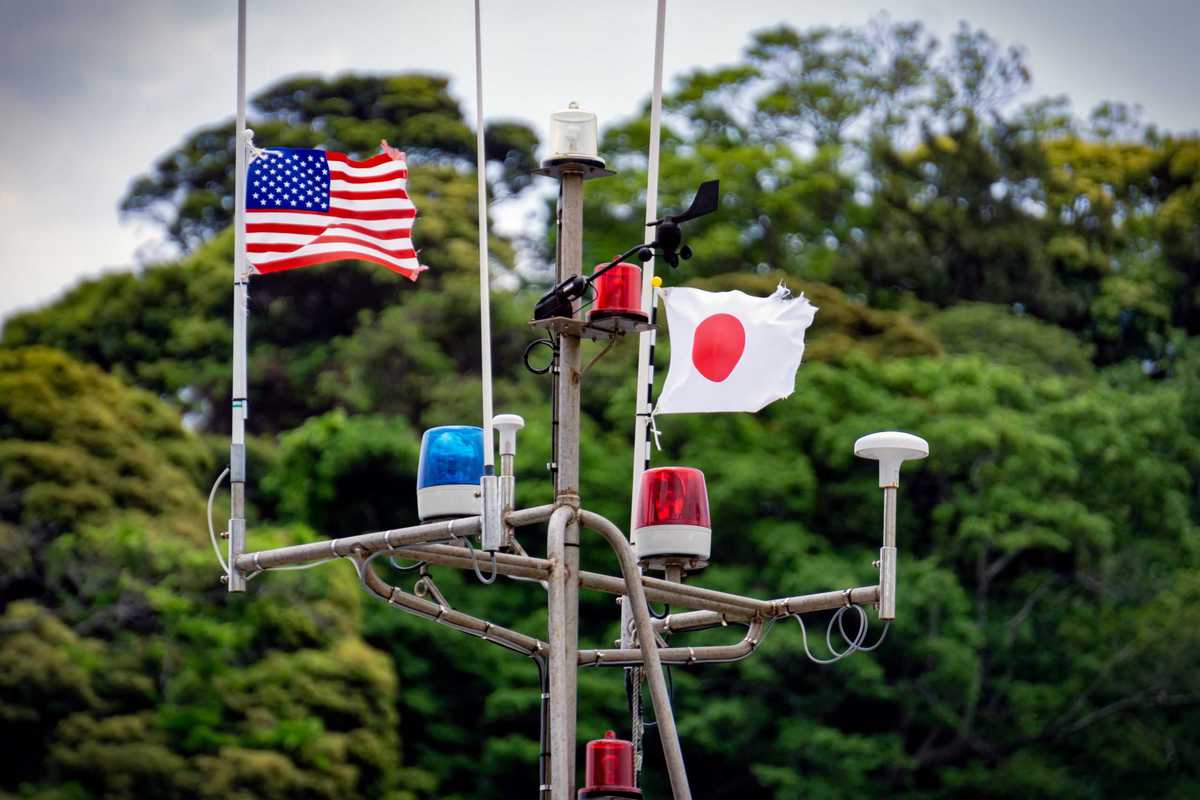Time for US, Japan to muscle up their alliance

A Japanese and American flag on a boat at Shimoda, Japan.
Originally published by Asia Times
Japan and US must either take some risks and bump up military cooperation or the Chinese will swamp them in the Senkakus
On March 15-16, US Secretary of State Antony Blinken and Secretary of Defense Lloyd Austin met with their Japanese counterparts in Tokyo. This was the first overseas visit by the two officials, highlighting the importance of the US-Japan relationship.
North Korea, Taiwan, climate change and Covid-19 were discussed, but the big topic was China. The Americans and Japanese declared that China is a regional (if not global) threat – and, most importantly for Tokyo, that the US commitment to defend Japan is solid and covers the Japanese-administered Senkaku Islands, which China is trying to pry away from Japan.
Both sides declared the visit a success. But that’s always the case with these visits. Can anyone recall one that wasn’t a “success”? The language is always familiar:
- “Most important bilateral relationship,”
- “Cornerstone of peace and stability in Asia,”
- “Shared mutual values,”
- “In lock step.”
And just to be sure:
- “The US commitment is undiminished,” and
- “The alliance has never been stronger.”
Make no mistake, the US-Japan relationship and the 60-year-old Japan-US Mutual Security Treaty are as important as billed.
And most Asian nations are quietly grateful for the US-Japan alliance – though these days it’s more for counter-balancing China than for keeping Japan in check.
Remove the US-Japan alliance and in short order the People’s Republic of China will remake the map – and the political order – in the Asia Pacific. The Americans will be pushed back – and eventually out of Asia. Taiwan’s days will be numbered. And Beijing will soon be settling scores with the Japanese.
Even if the so-called 2+2 meeting was predictable in most respects, and the official post-meeting statement and follow-on press conference said all the right things, there was something a little different this time:
This was the first time the PRC was called out so pointedly. Beijing was criticized for its “coercive,” “destabilizing” and “unlawful” behavior all over the map: Senkakus, East China Sea, South China Sea, Tibet, Taiwan, Hong Kong, Xinjiang.
Such wording was no small thing for Japan. China is nearby and Japan has deep economic ties with the PRC. And there is a large pro-China constituency within Japan’s ruling political and business classes.
Japan is clearly frightened. Perhaps to provide additional assurance, the Japanese and the Americans agreed to meet again before year’s end. It’s a safe bet that meeting, too, will be a “success.”
But here’s a problem: Words aren’t the same as actions. And these top level meetings typically produce more of the former than the latter.
Let’s see if US and Japanese “alliance managers” can break from tradition and add some real substance to the 2+2 meeting’s rote restatement of “vows” and eternal commitment.
Click HERE to read more.
- Communist China Telegraphs Its Punches - December 30, 2025
- Sometimes One’s Image of a Country gets ‘fixed in time’ and left behind by reality - December 22, 2025
- Taiwan confirms $11 billion U.S. weapons sale; China condemns arms deal as ‘dangerous’ - December 18, 2025
